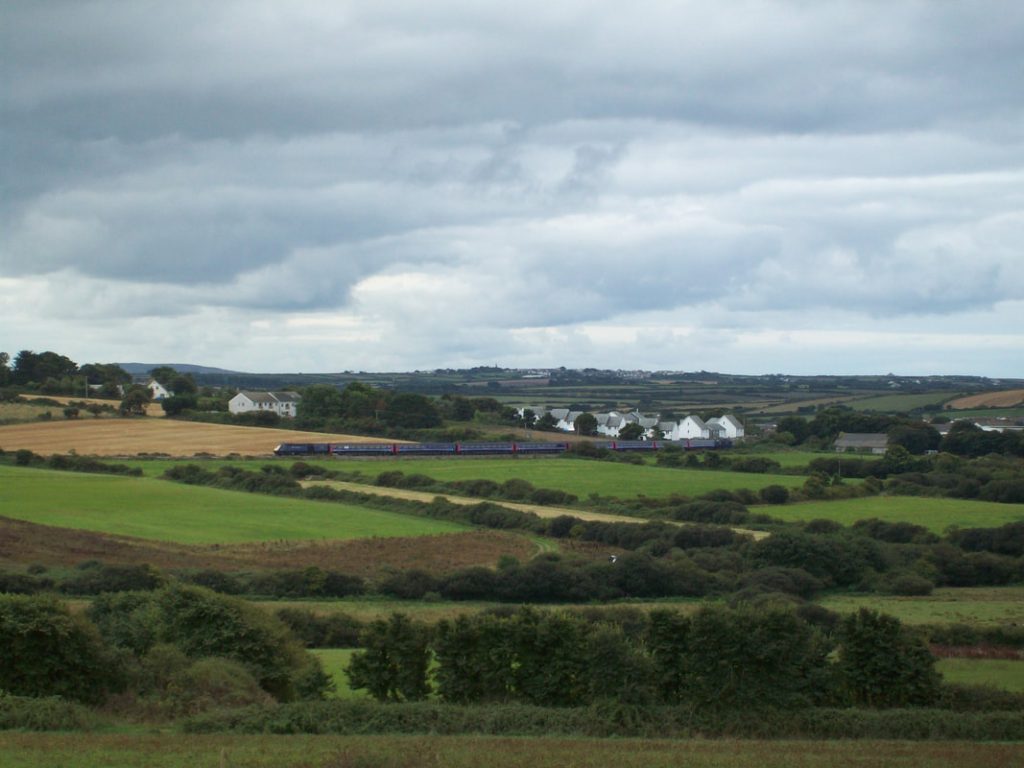On 8th September, 2018, the scout went to Newquay because it would be his last chance to stand beside the open window of a Mark III while an H.S.T. made its way along the branch.
What had been a summer Saturday procession was down to two on the last occasion. The scout caught the 0857 Plymouth and the 1728 Newquay. Light rain caused wheelslip part way up Luxulyan Bank, but the driver managed to get the train up to line speed again. The scout sp0ke to him at the “quay” and was told that progress was down to 15 m.p.h., with no sanders to aid traction. The scout asked him what power was needed on the bank and he replied that notch three or four was sufficient for the 1:37 climb. He had passed out on the Hitachis but didn’t know what the future held for Newquay; he said that there might be gauge infringement in Luxulyan Tunnel.
On the “Campaigning” pages, in a piece titled “Priority Transport,” there are examples of massive developments not being matched by the provision of rail transport. Sherford, the new town taking shape to the east of Plymouth is close to Oreston, on the former Yealmpton Branch. The massive Airbus factory in Bristol is close to North Filton. And the Duchy’s “Poundbury Light,” Nansledan, is not far from the Newquay Branch.
So, on arrival at the quay, the scout headed for the new town (starting price for a “coach house” £250,000 (in 2018)) to find a vantage point for some shots.
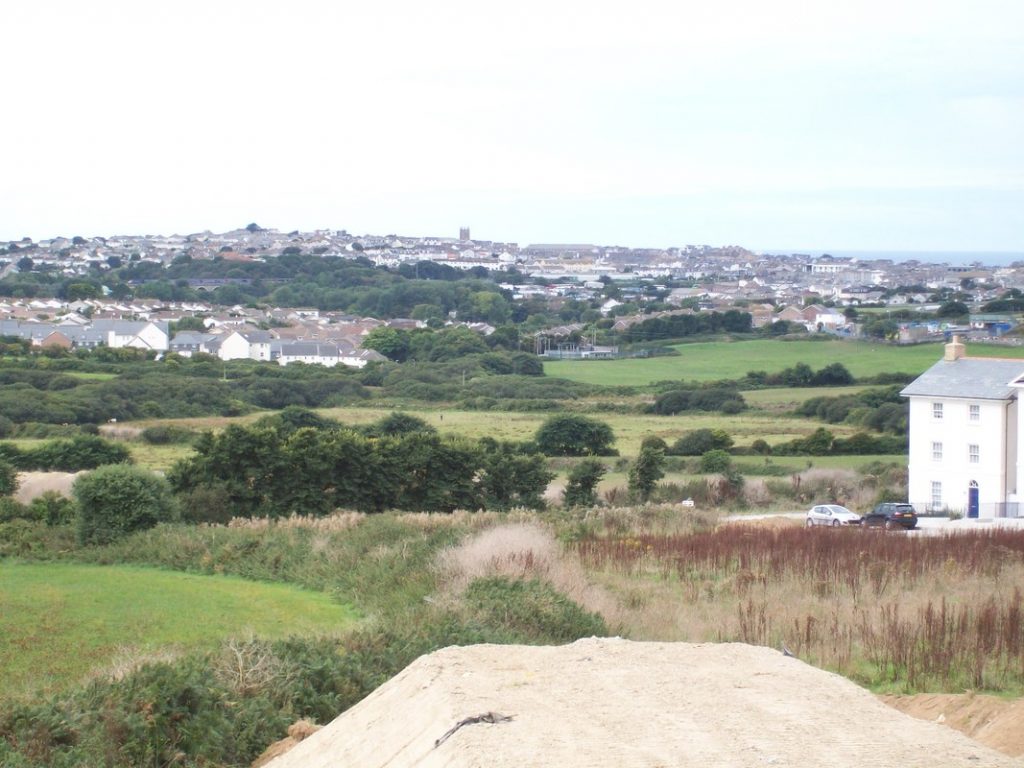
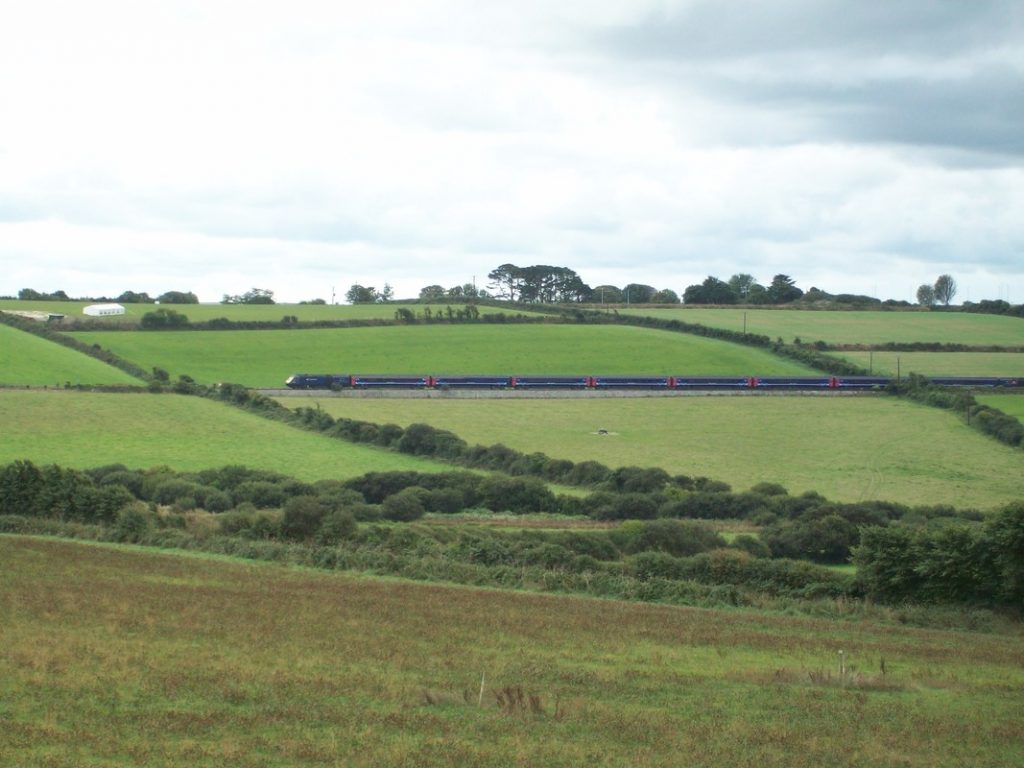
The scout revisited Nansledan at the end of a ride from St. Austell in July, 2022.
With six hours before his train home, the scout rode to Trevose Head along roads which are not for the faint-hearted. He went down to the gates of the lighthouse and then climbed to the coastguard lookout for the fabulous view of the Cornish coastline.
On the way back, he hesitated at the turning for the lifeboat station but thought he ought to take a peak. When he looked down from the top of a long flight of steps, he realized that it was the one on stilts and clad in copper that he had seen many times in pictures. Thinking of the brisk sou-westerly he was going to have to face on the way back, he hesitated again. Then a car pulled up behind him and two young ladies in short skirts got out and floated down the steps.
Contrary to his thinking a moment before, that if he had seen one lifeboat station, he had seen them all, the scout suddenly decided that he really should learn more about the work of the R.N.L.I. He locked up his bike and followed.
A little later, after reading some of the many wall displays, he was very glad that he had not gone away for it became obvious that a launch was imminent. The scout does seem to have the good fortune of something interesting often being laid on when he turns up at places.
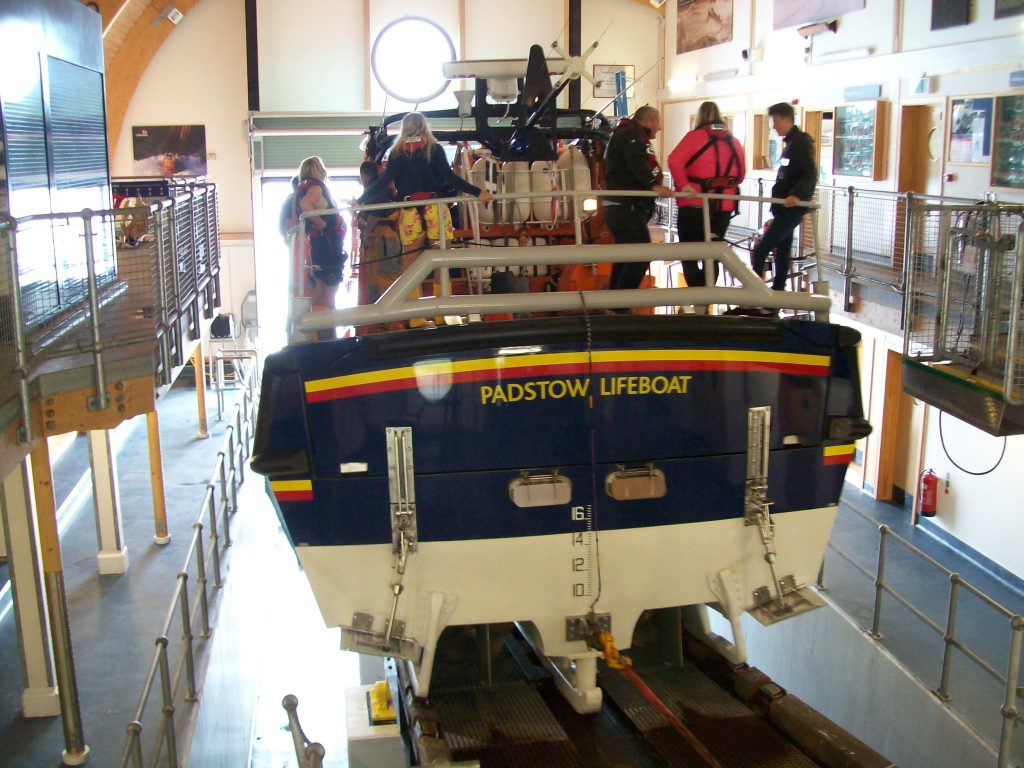
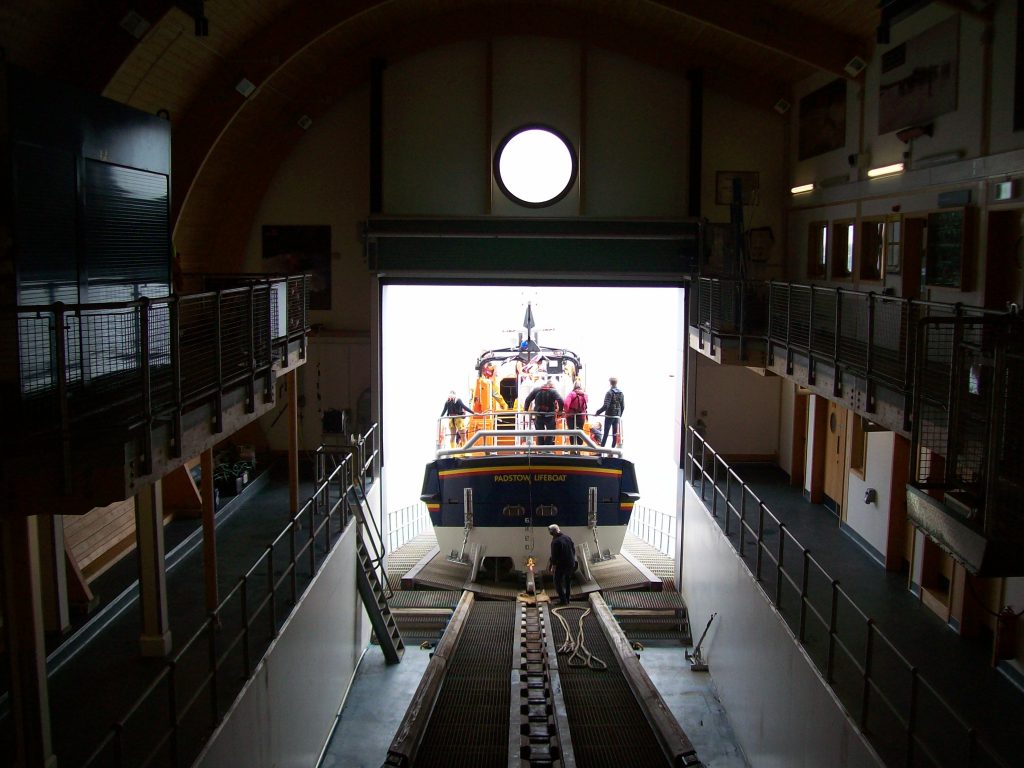
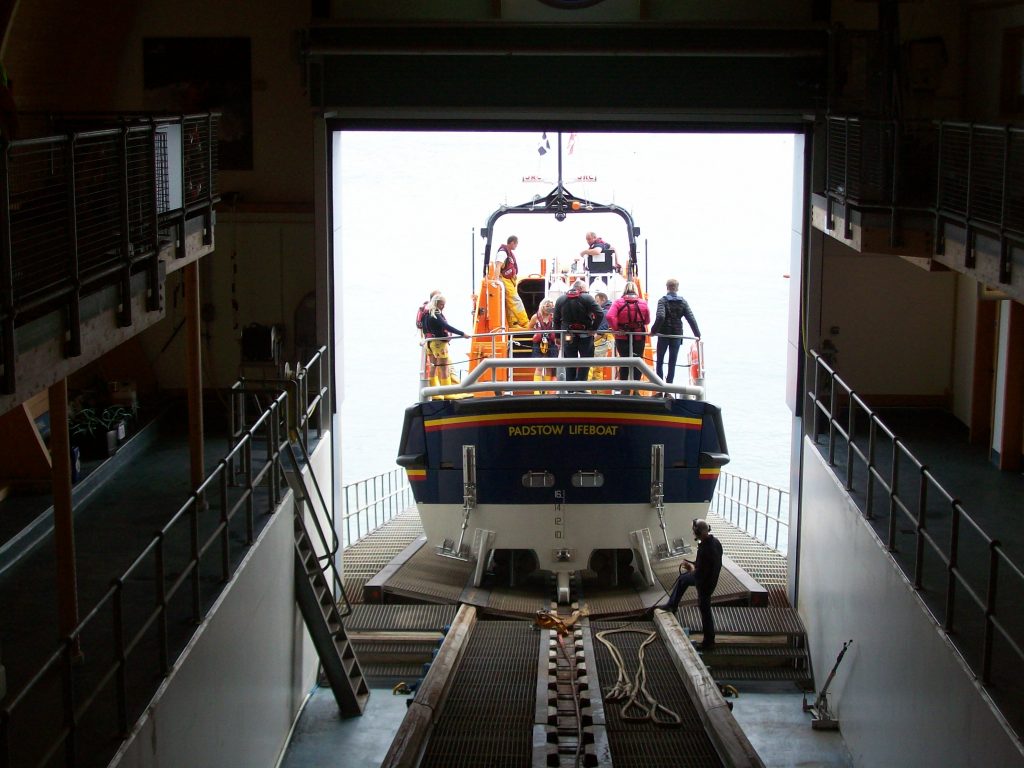
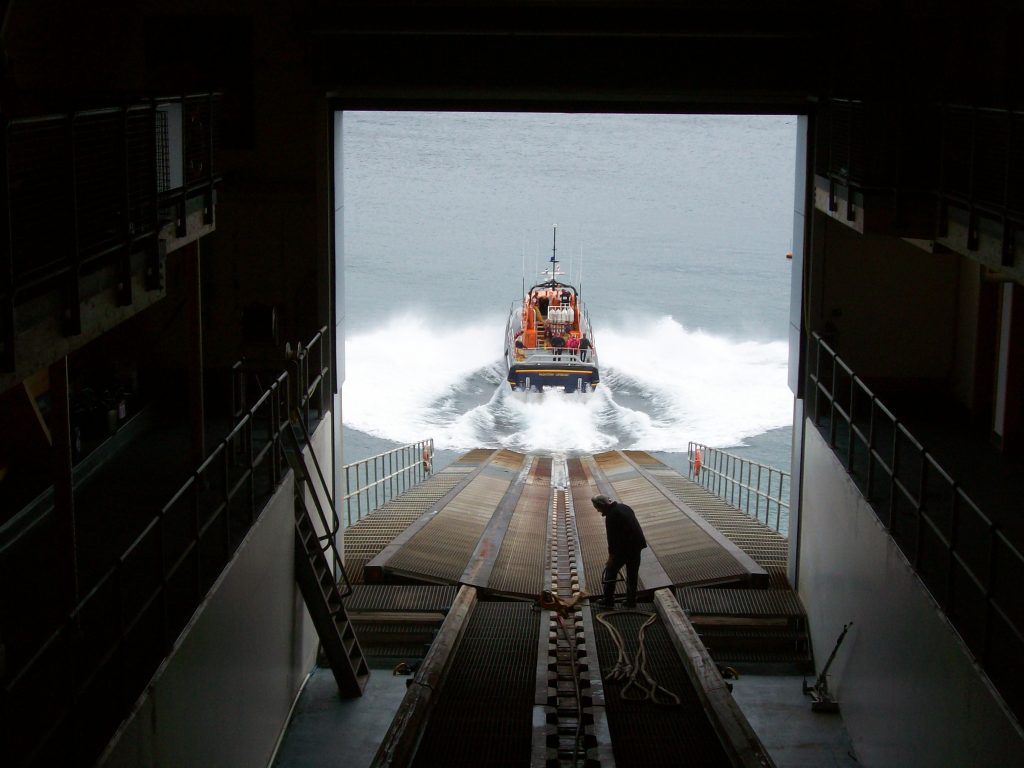
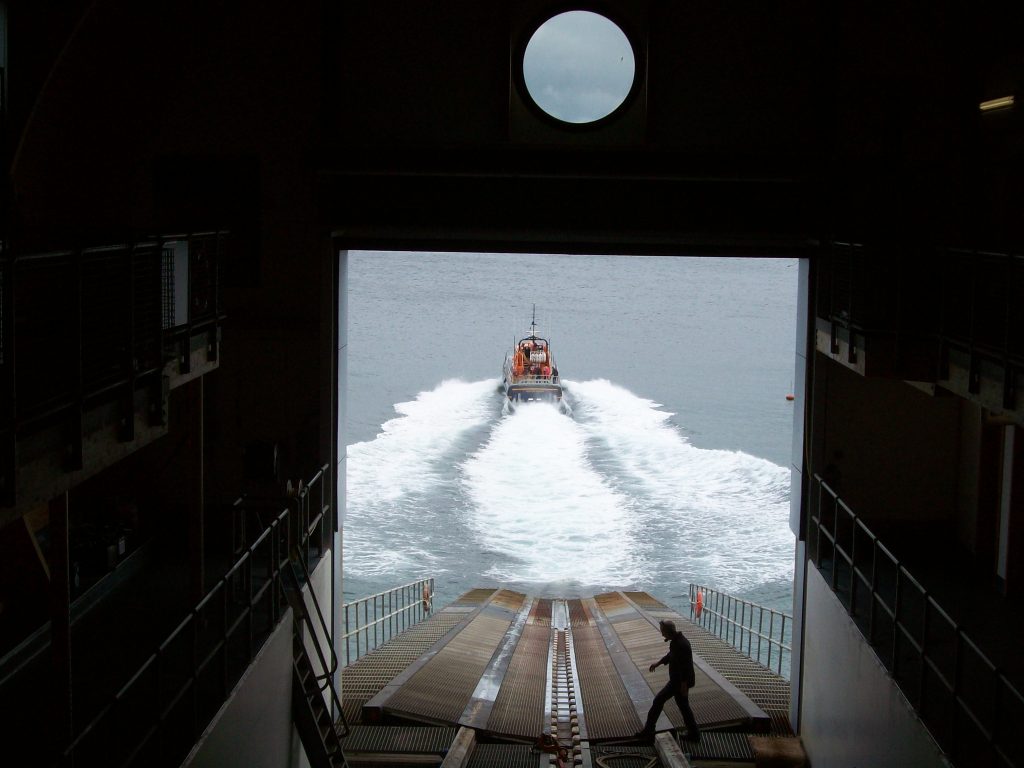
It clearly not being a “shout,” the scout asked an officer about the launch. He was told that it was for a Christening at Padstow, a lifeboat tradition which can be requested by serving and former crew members. “They’ll be back in an hour and you can see the boat brought out of the water,” the officer added.
Rather stupidly, the scout continued: “There wouldn’t have been the two young ladies on board in an emergency.” “Oh, yes there would be,” the officer assured. “They’re crew members and sisters.” If only the scout knew when to stop talking.
The scout was sure that retrieval would have been an interesting procedure to watch—it has to be a fairly calm sea—but he felt that he had witnessed the best part of the show. Before leaving, he sauntered across to the donation “boat.” “That was worth five pounds of anyone’s money,” he thought. After all, what was the chance that he would be at one of the West Country’s three slip stations, on his own, at the time of a launch?
Some time later, the scout decided that five pounds had not been enough and so he sent a very much more substantial donation by post to H.Q.
Padstow Lifeboat Station by John Grimes Partnership.
The scout then pushed his way back along the coast road. He thought he would stop for some grub but ended up back in town, where he bought a substantial lunch and ate it on the concourse at Newquay Station, very pleased with his effort and his luck.
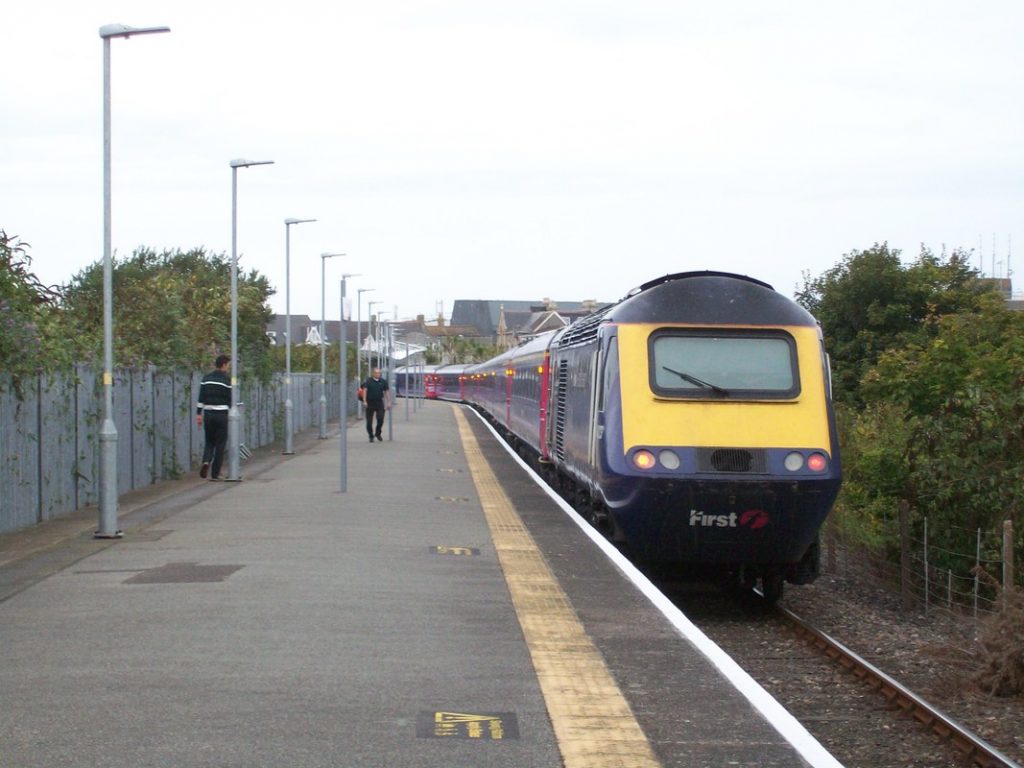
Having not thought of it earlier, the scout asked this driver whether he could tell if the rear power car was slipping. The lamp only warns of wheelslip somewhere. Of course, in theory, the rear power car has a cleaner rail.
Remembering that when the Class 50s bowed out there was a mass outpouring of grief, the scout had been looking for some interest in these old things, whose era was far longer than the hydraulics or the English Electrics; longer even than the “Kings.” Then along came Anthony Christie and a handful of fanciers unknown to the scout. Newquay had gone back to sleep and there were barely 40 passengers for this last-but-one train.

